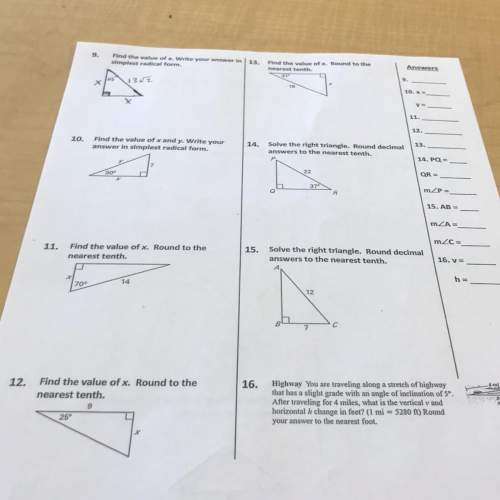
Mathematics, 27.04.2021 15:20 aubrey1161
Prove the following statement using mathematical induction. Do not derive it from Theorem 1 or Theorem 2.
For every integer n ≥ 1, 1 + 6 + 11 + 16 + + (5n − 4) = n(5n − 3)/2
Proof (by mathematical induction): Let P(n) be the equation
1 + 6 + 11 + 16 + + (5n − 4) = n(5n − 3) 2
We will show that P(n) is true for every integer n ≥ 1.
Show that P(1) is true : Select P(1) from the choices below.
P(1) = 1
1 + (5 · 1 − 4) = 1 · (5 · 1 − 3)
1 = 1 · (5 · 1 − 3)/2
P(1) = 1 · (5 · 1 − 3)/2
The selected statement is true because both sides of the equation equal . Show that for each integer k ≥ 1, if P(k) is true, then P(k + 1) is true:
Let k be any integer with k ≥ 1, and suppose that P(k) is true. The left-hand side of P(k) is, and the right-hand side of P(k) is___.
[The inductive hypothesis states that the two sides of P(k) are equal].
We must show that P(k + 1) is true. P(k + 1) is the equation 1 + 6 + 11 + 16 + ⋯ + (5(k + 1) − 4) =. After substitution from the inductive hypothesis, the left-hand side of P(k + 1) becomes+ (5(k + 1) − 4). When the left-hand and right-hand sides of P(k + 1) are simplified, they both can be shown to equal. Hence P(k + 1) is true, which completes the inductive step.

Answers: 2
Another question on Mathematics

Mathematics, 21.06.2019 18:00
Someone this asap for a group of students attends a basketball game. * the group buys x hot dogs at the concession stand for $2 each. * the group buys y drinks at the concession stand for $3 each. the group buys 29 items at the concession stand for a total of $70. how many hot dogs did the group buy?
Answers: 1

Mathematics, 22.06.2019 01:50
Felix wrote several equations and determined that only one of the equations has no solution. which of these equations has no solution?
Answers: 3

Mathematics, 22.06.2019 02:00
Prove the following(cot0+cosec0)[tex](cot0 + cosec0) { }^{2} = \frac{1 + cos0}{1 - cos0} [/tex]
Answers: 1

Mathematics, 22.06.2019 02:00
Sally deposited money into a savings account paying 4% simple interest per year. the first year, she earned $75 in interest. how much interest will she earn during the following year? show your work and explain your reasoning in the space provided below.
Answers: 2
You know the right answer?
Prove the following statement using mathematical induction. Do not derive it from Theorem 1 or Theor...
Questions



Mathematics, 25.01.2021 21:10




English, 25.01.2021 21:10



Computers and Technology, 25.01.2021 21:10




Geography, 25.01.2021 21:10










